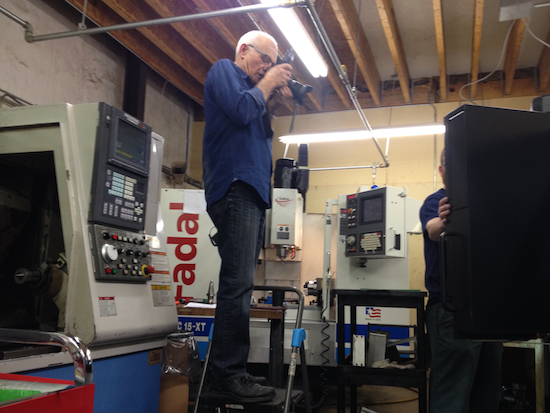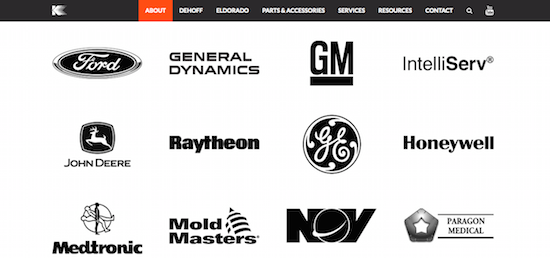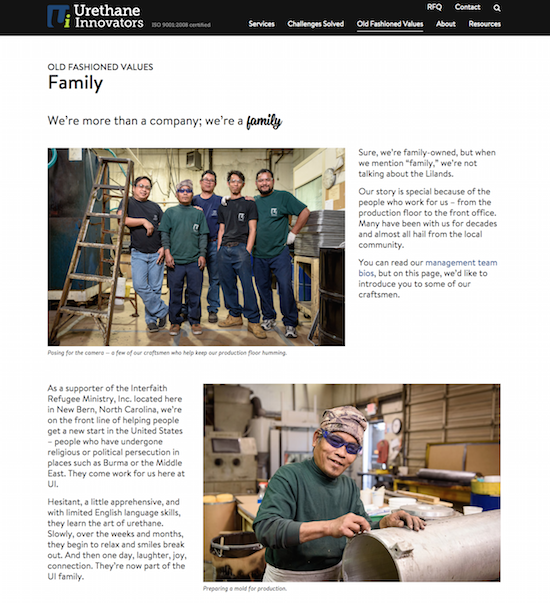 In his piece, Why the 21st Century Will Belong to Family Businesses, Josh Baron lists the five reasons family businesses have innate strengths when compared to other forms of ownership, especially public companies.
In his piece, Why the 21st Century Will Belong to Family Businesses, Josh Baron lists the five reasons family businesses have innate strengths when compared to other forms of ownership, especially public companies.
These strengths include providing a “higher calling” that attracts and retains talent and providing rapid response to complex challenges. More importantly, these strengths include the support of and connection with local communities.
But one strength Baron left out of his very fine article is that of trust.
As the owner of your small industrial company, you have dozens of first-name relationships with your customers: you may play golf together, belong to the same religious organization, or volunteer time for the same community events.
Your customers know if they have a problem, they need only pick up the phone and call you. That’s trust. Trust you’ll pick up the phone. Trust you’ll follow through on your commitment. Trust in your integrity as a small business owner.
Establishing trust and reputation online
In the old days, building trust with our customers was based on personal relationships that often spanned years and sometimes decades.
That’s still true, of course, but as the buying cycle continues to shrink and change due to technology and other factors, and buyers now searching for vendors online, it’s become critically important that your website establish the foundation for trust and reputation well before a prospective buyer makes the initial contact.
This post gives you a few tips on how to create a website that sets the foundation for building trust and connection with your prospective buyers and employees.
Tip #1: Consider a custom-built website tailored to your business
As a small business owner, you have a number of options when it come to creating a new website. One option is to choose a pre-built WordPress theme. This option is cost-effective (some themes can be as low at $25) and a time-saving. The website is already built; all you do is “customize” it by adding photos, logo and text.
But pre-built themes also have their downside. One, thousands of companies can all use the same theme. The result is you tend to see websites across industries all looking the same — right down to stock photos.
A pre-built theme also forces you to conform to someone’s else’s idea of how to present your company to the world. Developers and coders create one-size-fits-all templates with the prime objective being revenue generation for their companies . . . not yours. Thus, they have zero stake in helping you showcase your company to its best advantage.
Pre-built themes may include fads, such as the website is entirely one page, which seems cool but wreaks havoc with your SEO, or the use of the hamburger icon for navigation, which research has proven confuses people.
Hamburger icons are those three bar icons you sometimes see in a website’s top right corner; they’re used in place of navigation on mobile design, where space is at a premium. Although currently “cool,” they don’t transfer well to desktop use.
Or, the theme can be built around a “mobile first” strategy — which is fine, unless the majority of your customers use desktop machines to conduct work and the mobile design frustrates their ability to find the information they need.
Often, a pre-built theme doesn’t accommodate any lengthy (read: useful) copy nor is it easy to customize the template to suit your marketing, sales, and business goals.
For these reasons, if you have the budget, I recommend a custom coded, custom designed WordPress website that’s built from the ground up and is based on your strategy, your business, and your marketing objectives.
By having a website tailored to your unique business, you set the stage for creating something that looks, feels, and sounds authentic, original, and trustworthy.
Tip #2: Use original, high-quality photographs
As part of my process, I conduct a great deal of research, including looking at competitor websites.
For one client, I looked at over 30 competitor websites. Almost all of them looked and sounded the same due to using similar WordPress themes. And, almost all of them used boring stock images to communicate tired cliches.
To make your website stand apart from crowd — and establish your company’s reputation, trust and credibility — hire a professional photographer to take photos of your products, your facility, and your people.
By hiring a professional photographer, you can work directly with him or her to ensure the photographs tell your unique story.

I recommend you create a list of photos you want taken before the photographer arrives — and tie these back to the pages within the website sitemap and to the messages you want to communicate.
I also recommend you hire a photographer who specializes in industrial photography. Most professional photographers are very good at what they do; however, while a wedding photographer may have a real talent with taking portraits of a dewy bride preparing to take her vows, he/she will not understand how to best stage photos inside your industrial facility. (Trust me, it takes real skill.)
Ask around for recommendations and then look at photographers’ online portfolios. You’ll know right away which one is suitable for your business.
Tip #3: Show the “why” behind “Our people make the difference!”
In his piece about family business strengths, Baron writes, “In today’s knowledge economy, success depends on finding, empowering, and retaining the most talented people. Businesses need to do more than offer competitive wages and benefits; they have to provide a ‘higher calling’ that makes clear the intrinsic value of working for their companies.”
Family-owned industrial manufacturers and job shops have this “higher calling” in spades, but you’d be hard pressed to find it on their websites.
When looking at industrial websites, I often see the cliche, “Our people make the difference!” but rarely do I see photos of the people (e.g., the management team and employees). Usually I see a photo of the building or industrial equipment.
By including photos of the people who work in your company, you’ll realize a number of benefits, including showing prospective employees the wonderfully diverse makeup of your company.
In today’s Facebook age, people are used to and expect to see photos of friends and family going about their day-to-day lives. These photos help people stay connected. (When I ask people, “Why are you on Facebook?” the reply always is, “To stay connected with my family.”)
Adding photos of the people who work for you serves the same purpose. Original photos help younger workers determine if they’ll fit in with your company as these photos dispel the myth that manufacturing is made up of grumpy old white men. Far from the truth as small, family-owned manufacturing teams include women and men of all ages and color — but your prospective employees will never know this if your website shows only your building.
But adding photos is only a first step. Accompanying copy should communicate your company’s values — because it’s these values that provide that crucial foundation for connection and trust for prospective employees and buyers alike.
Urethane Innovators, for example, dedicated a page of their website to telling the story about how some of their craftsmen are political and religious refugees. The accompanying copy briefly describes UI’s involvement with a local community organization that vets these refugees. It also communicates one of the company’s most important values, namely: everyone at the company considers themselves to be part of the UI family.
Tip #4: Show how you solve challenges
One of my favorite quotes is from John D. Bassett III, Chairman of Vaughn-Basset Furniture: “Everybody thinks all the great ideas come outta MIT, but let me tell you, there’s a great deal of innovation that comes off the factory floor.”
I would add — “and small industrial job shops.”
The one thing that’s been a constant my entire career is the sheer amount of innovation I see — and for small industrial manufacturers and job shops, this innovation comes in the form of solving tough challenges.
It’s these stories that really help build that reputation and trust with prospective buyers (and potential employees, too).
You can show how you solve challenges through photos with brief stories, case studies, and application notes, to name a few things. By showing prospective buyers your track record, you demonstrate your attitude, your ability to think, and your creativity.
As an aside, these stories can be repurposed into articles for trade publications and newsletters — again building that reputation, credibility and trust with a wider audience.
Tip #5: Include client logos and testimonials
As I continue to work with and get to know small, family-owned manufacturers, I’m always amazed at their A+ client lists — which, previous to our working together, they haven’t posted on the website.
To help build reputation and trust with prospective buyers, I now advise that clients add a partial list of client logos to the home page as well as the client list page.

Seeing logos of well-known companies is one of those subtle cues that website visitors pick up. “Oh, they’ve done business with so-and-so; they must be good.”
But, while client logos are good, testimonials are even better. If your website lacks testimonials, it’s a simple matter to obtain them: ask!
In conclusion . . .
As a small business owner, you play an important role in the U.S. economy, global supply chain, and your local community. As large public companies continue to struggle and merge, the strengths of your family-owned business — namely reputation and trust — will continue to help you grow for the long-term.
To take advantage of the sea-change Baron outlines in his article, your website should tell your company’s story and its role in fostering growth and innovation — because it’s for these reasons that people will want to connect with you and ultimately do business with you.
If you’d like to talk about how to improve your website, or hiring Huff Industrial Marketing to help you better manage your marketing and SEO efforts — and see improved results over time — book a call to discuss. Or, simply pick up the phone and call: 603-382-8093.

